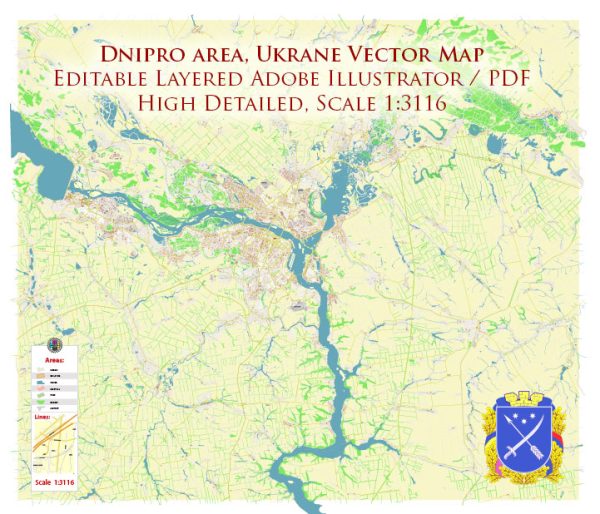Dnipro, formerly known as Dnipropetrovsk, is one of the major cities in Ukraine and has a rich history of urban development. The city is located in the central part of the country along the Dnieper River. Here’s a brief overview of the history of urban development in Dnipro:
- Early History:
- The area around Dnipro has been inhabited since ancient times, with evidence of human presence dating back to the Paleolithic era.
- In the Middle Ages, the region was part of the Kyivan Rus, and the Dnieper River served as an important trade route.
- Cossack Period:
- In the 17th century, the region became a center for Cossack communities. The Cossacks played a crucial role in the defense of the area against various invaders.
- Imperial Russia:
- In the 18th century, the Russian Empire expanded its influence in the region. Catherine the Great founded the city of Yekaterinoslav (named after her) in 1776, marking the beginning of the modern city’s development.
- The city grew as an important industrial and trade center, with a focus on metallurgy and machine building.
- Soviet Era:
- During the Soviet era, Dnipropetrovsk continued to play a significant role in industry and defense. It became a closed city due to its importance in the development of military technology.
- The city underwent further industrialization, and its population grew rapidly.
- World War II:
- Dnipropetrovsk suffered heavily during World War II. It was occupied by German forces, and much of the city’s infrastructure was damaged or destroyed.
- Post-Soviet Independence:
- After the dissolution of the Soviet Union in 1991, Dnipropetrovsk, like many other cities in Ukraine, underwent changes in its political and economic structure.
- The city was officially renamed Dnipro in 2016 as part of a broader decommunization effort in Ukraine.
- Contemporary Development:
- In recent years, Dnipro has been working on modernizing its infrastructure and promoting economic development. Efforts have been made to attract foreign investment and develop the city’s cultural and recreational amenities.
- The city has seen the construction of new buildings, shopping centers, and the improvement of public spaces.
- Cultural and Educational Hub:
- Dnipro is home to several universities, theaters, and museums, contributing to its status as a cultural and educational hub in the region.
The history of Dnipro’s urban development reflects the broader historical and political changes in Ukraine. The city’s strategic location on the Dnieper River, combined with its industrial and cultural significance, has shaped its growth and evolution over the centuries.


 Author: Kirill Shrayber, Ph.D.
Author: Kirill Shrayber, Ph.D.